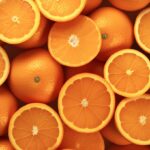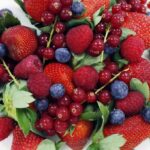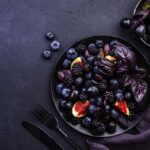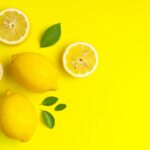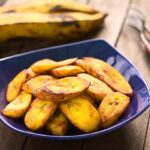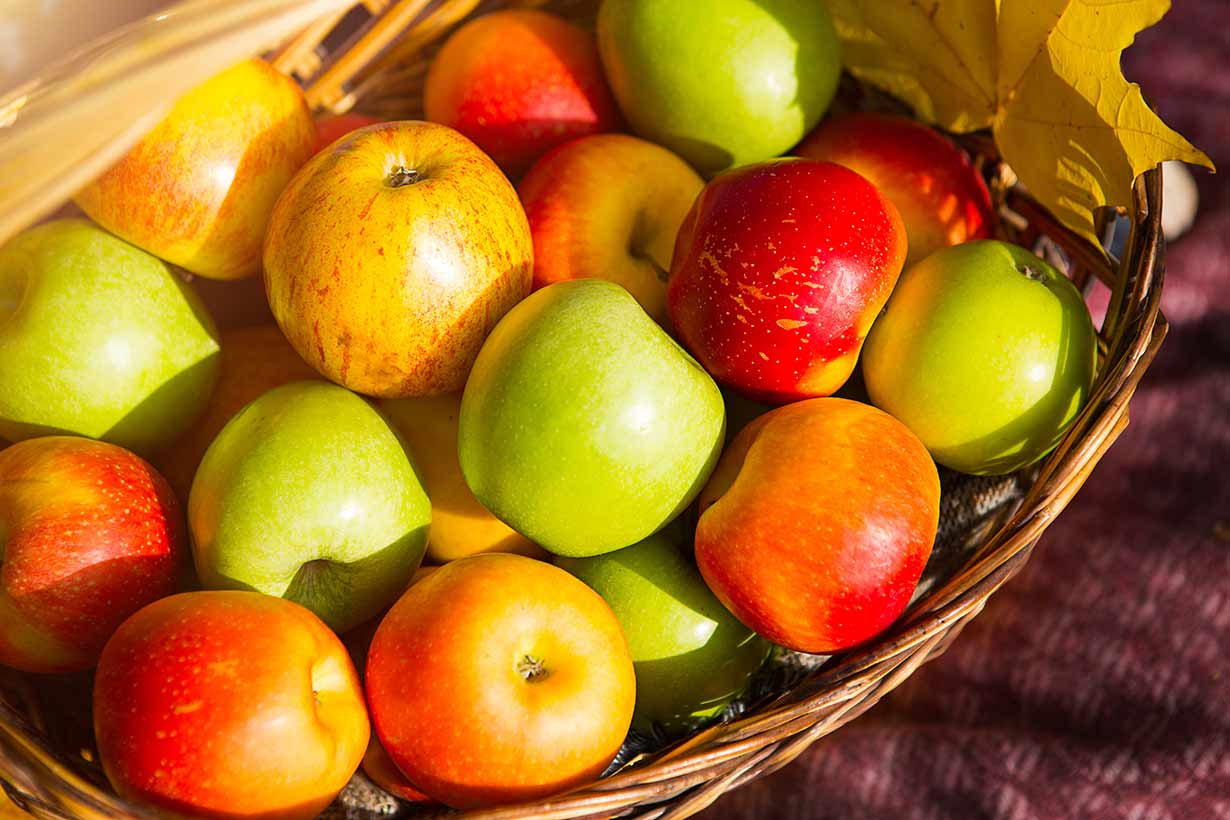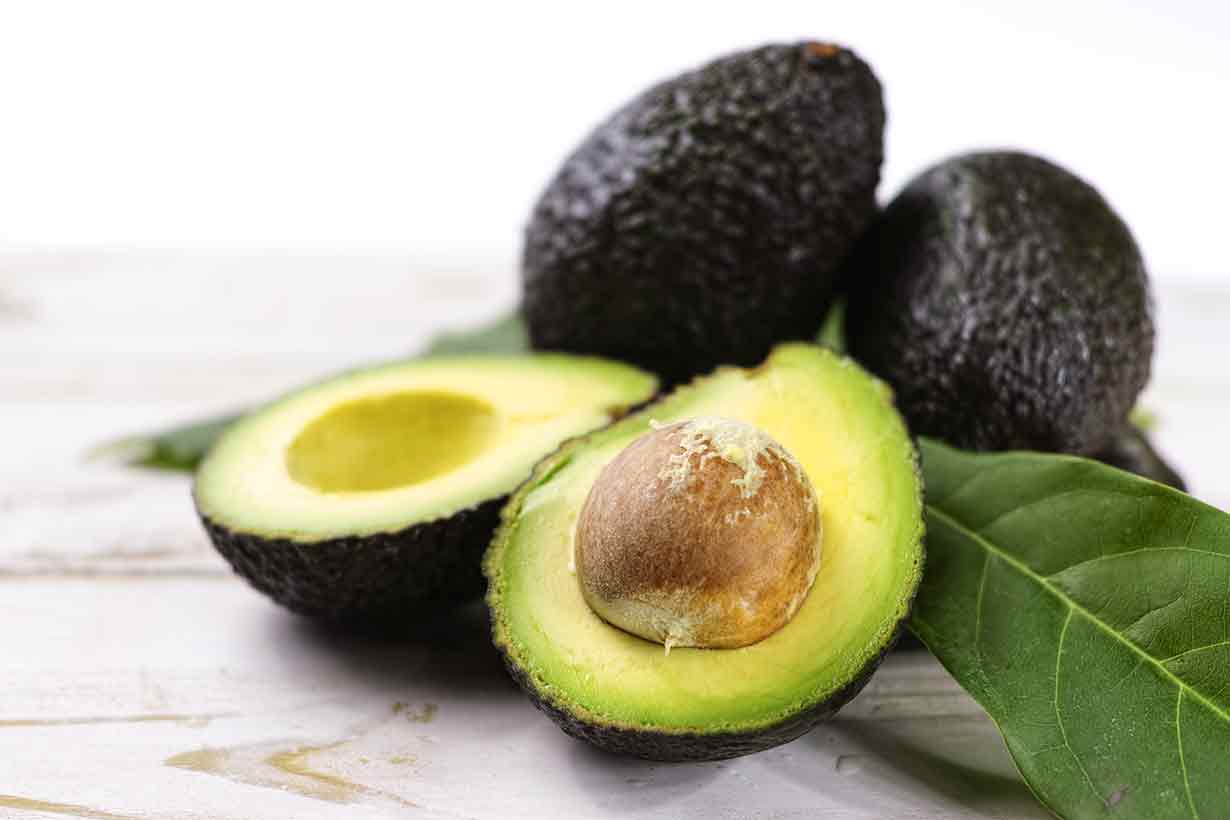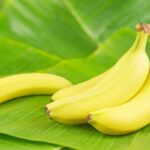Melons are delicious, juicy fruits with good nutritional value for relatively few calories.
However, there are many different types of melon, and they are all quite different nutritionally.
This article examines ten of the most popular varieties of melons and their nutritional properties.
Unless otherwise stated, the source of all nutritional data is the USDA’s FoodData Central database. Daily values have been calculated using the FDA’s recommended daily values, which are based on a 2000-calorie diet (1, 2).
Table of contents
1) Banana Melon
With the exciting name of ‘banana melon,’ it may be evident that this melon variety has a yellow color and a somewhat banana-like shape.
Interestingly, banana melons can weigh more than three kilograms each. In addition, these melons have sweet flesh and a scent reminiscent of bananas (3).
In the table below, we can see the full nutritional values for banana melon per 100-gram serving (4):
| Name | Amount | % Daily Value (% DV) |
|---|---|---|
| Calories | 21 kcal | |
| Carbohydrates | 4.06 g | 1.5% |
| Fiber | 0.3 g | 1.1% |
| Sugars | 3.36 g | |
| Fat | 0.2 g | 0.3% |
| Protein | 0.84 g | 1.7% |
| Folate | 20 mcg | 5% |
| Vitamin A, RAE | – | – |
| Vitamin B1 (Thiamin) | 0.02 mg | 1.7% |
| Vitamin B2 (Riboflavin) | 0.02 mg | 1.5% |
| Vitamin B3 (Niacin) | 0.46 mg | 2.9% |
| Vitamin B5 (Pantothenic Acid) | 0.07 mg | 1.4% |
| Vitamin B6 (Pyroxidine) | 0.05 mg | 2.9% |
| Vitamin B12 (Cobalamin) | – | – |
| Vitamin C | 8.1 mg | 9% |
| Vitamin E | – | – |
| Vitamin K | 4.9 mcg | 27.2% |
| Calcium | 13 mg | 1% |
| Copper | 0.04 mg | 4.4% |
| Iron | 0.21 mg | 1.2% |
| Magnesium | 10 mg | 2.4% |
| Manganese | 0.04 mg | 1.7% |
| Phosphorus | 9 mg | 0.7% |
| Potassium | 140 mg | 3.0% DV |
| Selenium | 0.4 mcg | 0.7% DV |
| Sodium | 11 mg | 0.5% DV |
| Zinc | 0.14 mg | 1.3% DV |
2) Cantaloupe Melon
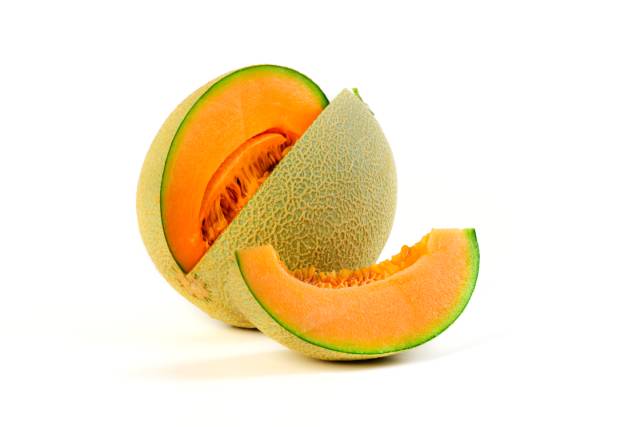
The cantaloupe melon is one of the most famous—and popular—melon varieties.
With a sweet and juicy orange-colored flesh, many people enjoy the taste of cantaloupe melon.
The fruit can grow to a size of anywhere from three to seven pounds (1.3 – 3.2 kilograms). Records show the cultivation of cantaloupe melon as far back as the late 15th century (5).
Here are the full nutritional values per 100 grams of cantaloupe melon (6):
| Name | Amount | % Daily Value (% DV) |
|---|---|---|
| Calories | 34 kcal | |
| Carbohydrates | 8.16 g | 3.0% |
| Fiber | 0.9 g | 3.2% |
| Sugars | 7.86 g | |
| Fat | 0.19 g | 0.2% |
| Saturated | 0.05 g | 0.3% |
| Monounsaturated | 0.003 g | |
| Polyunsaturated | 0.08 g | |
| Omega-3 | 0.05 g | |
| Omega-6 | 0.04 g | |
| Protein | 0.84 g | 1.7% |
| Folate | 21 mcg | |
| Vitamin A, RAE | 169 mcg | 5.3% |
| Vitamin B1 (Thiamin) | 0.04 g | 3.3% |
| Vitamin B2 (Riboflavin) | 0.02 g | 1.5% |
| Vitamin B3 (Niacin) | 0.73 g | <0.1% |
| Vitamin B5 (Pantothenic Acid) | 0.11 g | 2.2% |
| Vitamin B6 (Pyroxidine) | 0.07 g | 4.1% |
| Vitamin B12 (Cobalamin) | – | – |
| Vitamin C | 36.7 mg | 0.4% |
| Vitamin E | 0.05 mg | 0.3% |
| Vitamin K | 2.5 mcg | 2.1% |
| Calcium | 9 mg | 0.7% |
| Copper | 0.04 mg | 4.4% |
| Iron | 0.21 mg | 1.2% |
| Magnesium | 12.0 mg | 2.9% |
| Manganese | 0.04 mg | 1.7% |
| Phosphorus | 15 mg | 1.2% |
| Potassium | 267 mg | 5.7% |
| Selenium | 0.4 mcg | 0.7% |
| Sodium | 16.0 mg | 0.7% |
| Zinc | 0.18 mg | 1.6% |
3) Casaba Melon
Casaba melon has a similar taste to honeydew melon but with a much milder sweetness.
The flesh of casaba melon is pale green, and the fruit can grow to three to eight pounds (1.3 – 3.6 kilograms). Also, the cultivation of casaba melon has been underway for thousands of years ago in Persia (7).
Here is the nutritional data for 100 grams of casaba melon (8):
| Name | Amount | % Daily Value (% DV) |
|---|---|---|
| Calories | 28 kcal | |
| Carbohydrates | 6.58 g | 2.4% |
| Fiber | 0.9 g | 3.2% |
| Sugars | 5.69 g | |
| Fat | 0.1 g | 0.1% |
| Saturated | 0.025 g | 0.1% |
| Monounsaturated | 0.002 g | |
| Polyunsaturated | 0.039 g | |
| Omega-3 | 0.022 g | |
| Omega-6 | 0.017 g | |
| Protein | 1.11 g | 2.2% |
| Folate | 8 mcg | 2% |
| Vitamin A, RAE | 0 mcg | 0% |
| Vitamin B1 (Thiamin) | 0.02 mg | 1.7% |
| Vitamin B2 (Riboflavin) | 0.03 mg | 2.3% |
| Vitamin B3 (Niacin) | 0.23 mg | 1.4% |
| Vitamin B5 (Pantothenic Acid) | 0.08 mg | 1.6% |
| Vitamin B6 (Pyroxidine) | 0.16 mg | 9.4% |
| Vitamin B12 (Cobalamin) | 0 mcg | 0% |
| Vitamin C | 21.8 mg | 24.2% |
| Vitamin E | 0.05 mg | 0.3% |
| Vitamin K | 2.5 mcg | 2.1% |
| Calcium | 11 mg | 0.8% |
| Copper | 0.06 mg | 6.7% |
| Iron | 0.34 mg | 1.9% |
| Magnesium | 11 mg | 2.6% |
| Manganese | 0.035 mg | 1.5% |
| Phosphorus | 5 mg | 0.4% |
| Potassium | 182 mg | 3.9% |
| Selenium | 0.4 mcg | 0.7% |
| Sodium | 9 mg | 0.4% |
| Zinc | 0.07 mg | 0.6% |
4) Crenshaw Melon
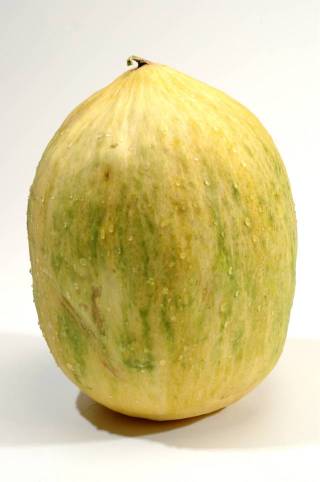
Crenshaw melons are a sweet and juicy melon variety with some taste similarities to cantaloupe melons.
These similarities make sense, given Crenshaw melons are a cross between cantaloupe and casaba melons (9).
However, in terms of appearance, the Crenshaw has yellow flesh rather than the salmon-orange of cantaloupe.
Crenshaw melons are large and can weigh up to ten pounds (4.5 kilograms) (10).
Based on data from the NCC Food and Nutrient database, here are the full nutritional values for Crenshaw melons per 100 grams (11):
| Name | Amount | % Daily Value (% DV) |
|---|---|---|
| Calories | 36 kcal | |
| Carbohydrates | 9.09 g | 3.3% |
| Fiber | 0.80 g | 2.9% |
| Sugars | 8.12 g | |
| Fat | 0.14 g | 0.2% |
| Saturated | 0.04 g | 0.2% |
| Monounsaturated | <0.01 g | |
| Polyunsaturated | 0.06 g | |
| Omega-3 | 0.03 g | |
| Omega-6 | 0.03 g | |
| Protein | 0.54 g | 10.8% |
| Folate | 19 mcg | 4.8% |
| Vitamin A, RAE | 37.5 mcg | 4.2% |
| Vitamin B1 (Thiamin) | 0.04 mg | 3.3% |
| Vitamin B2 (Riboflavin) | 0.01 mg | 0.8% |
| Vitamin B3 (Niacin) | 0.42 mg | 2.6% |
| Vitamin B5 (Pantothenic Acid) | 0.16 mg | 3.2% |
| Vitamin B6 (Pyroxidine) | 0.09 mg | 5.3% |
| Vitamin B12 (Cobalamin) | 0 mcg | 0% |
| Vitamin C | 18.0 mg | 20% |
| Vitamin E | 0.03 mg | 0.2% |
| Vitamin K | 2.9 mcg | 2.4% |
| Calcium | 6.0 mg | 0.5% |
| Copper | 0.02 mg | 2.2% |
| Iron | 0.17 mg | 0.9% |
| Magnesium | 10 mg | 2.4% |
| Manganese | 0.03 mg | 1.3% |
| Phosphorus | 11.0 mg | 0.9% |
| Potassium | 228 mg | 4.9% |
| Selenium | 0.70 mg | 1.3% |
| Sodium | 18.0 mg | 0.8% |
| Zinc | 0.09 mg | 0.8% |
5) Galia Melon
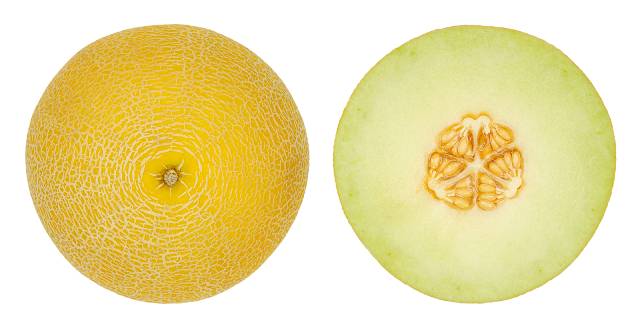
The Galia melon is a round-shaped melon with yellow skin. Inside the fruit, it has a pale green flesh with a flavorful sweet taste.
The fact that the Galia melon is a hybrid of cantaloupe and honeydew explains this sweet taste.
Galia melons grow to around two to three pounds (0.9 – 1.4kg) in weight (12).
Based on data from the Composition of Foods Integrated Dataset (CoFID), here are the nutritional properties of Galia melon (13):
| Name | Amount | % Daily Value (% DV) |
|---|---|---|
| Calories | 24 kcal | |
| Carbohydrates | 5.60 g | 2% |
| Fiber | – | – |
| Sugars | 5.60 g | |
| Fat | 0.10 g | <0.1% |
| Protein | 0.50 g | 1% |
| Folate | 3 mcg | 0.8% |
| Vitamin A | – | – |
| Vitamin B1 (Thiamin) | 0.03 mg | 2.5% |
| Vitamin B2 (Riboflavin) | 0.01 mg | 0.8% |
| Vitamin B3 (Niacin) | 0.40 mg | 2.5% |
| Vitamin B5 (Pantothenic Acid) | 0.17 mg | 3.4% |
| Vitamin B6 (Pyroxidine) | 0.09 mg | 5.3% |
| Vitamin B12 (Cobalamin) | 0 mcg | 0% |
| Vitamin C | 15.0 mg | 16.7% |
| Vitamin E | 0.10 mg | 0.7% |
| Vitamin K | – | – |
| Calcium | 13 mg | 1% |
| Copper | – | – |
| Iron | 0.20 mg | 1.1% |
| Magnesium | 12.0 mg | 2.9% |
| Manganese | – | – |
| Phosphorus | 10 mg | 0.8% |
| Potassium | 150 mg | 3.2% |
| Selenium | – | – |
| Sodium | 31.0 mg | 1.3% |
| Zinc | 0.10 mg | 0.9% |
6) Horned Melon
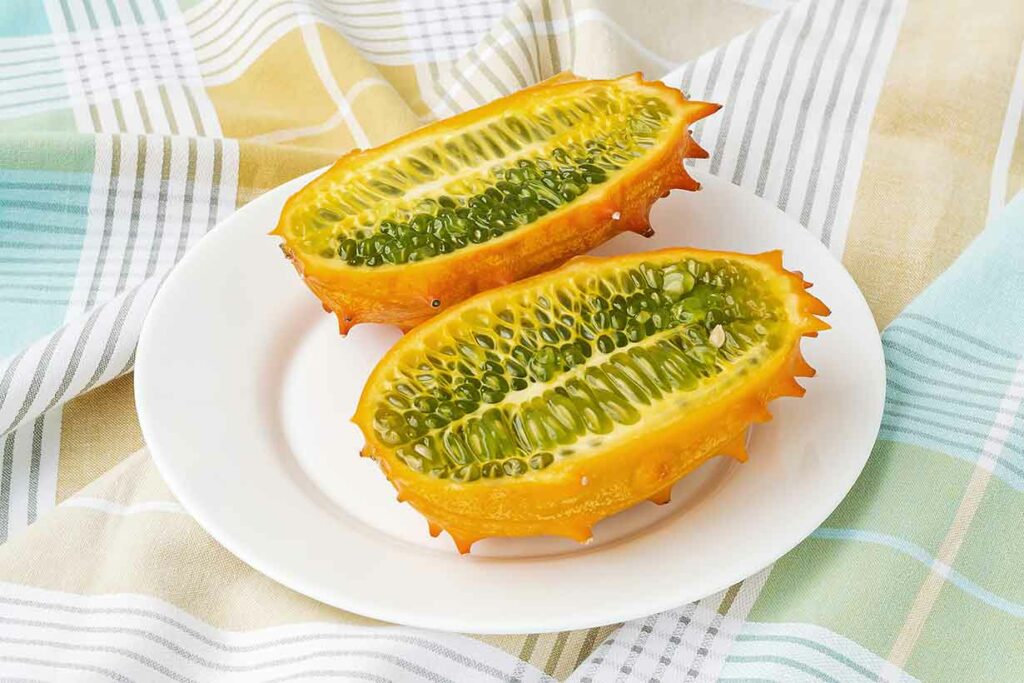
The horned melon has an exciting and unique appearance, quite unlike any other melon.
It is thought that the origin of the horned melon lies in Nigeria, and the fruit is small in size, with an average weight of 209 grams (14, 15).
On the outside of the fruit, we can find yellow to orange-colored skin with orange spikes. Inside the horned melon is a bright green jelly-like flesh.
The horned melon is otherwise known as ‘Kiwano,’ and it has a mildly sweet flavor. However, the taste can also have slightly tart notes, mainly if the melon is not fully ripe.
Based on data from the NCC Food and Nutrient Database, here are the nutritional values for horned melon per 100 grams (11):
| Name | Amount | % Daily Value (% DV) |
|---|---|---|
| Calories | 44 kcal | |
| Carbohydrates | 7.56 g | 2.7% |
| Fiber | 0.83 g | 3.0% |
| Sugars | 6.73 g | |
| Fat | 1.26 g | 1.6% |
| Saturated | 0.34 g | 1.7% |
| Monounsaturated | 0.02 g | |
| Polyunsaturated | 0.54 g | |
| Omega-3 | 0.31 g | |
| Omega-6 | 0.23 g | |
| Protein | 1.78 g | 3.6% |
| Folate | 3 mcg | 0.8% |
| Vitamin A | 7.33 mcg | 0.8% |
| Vitamin B1 (Thiamin) | 0.03 mg | 2.5% |
| Vitamin B2 (Riboflavin) | 0.02 mg | 1.5% |
| Vitamin B3 (Niacin) | 0.57 mg | 3.6% |
| Vitamin B5 (Pantothenic Acid) | 0.18 mg | 3.6% |
| Vitamin B6 (Pyroxidine) | 0.06 mg | 3.5% |
| Vitamin B12 (Cobalamin) | 0 mcg | 0% |
| Vitamin C | 5.30 mg | 5.9% |
| Vitamin E | 0.40 mg | 2.7% |
| Vitamin K | 16.6 mcg | 13.8% |
| Calcium | 13 mg | 1% |
| Copper | 0.02 mg | 2.2% |
| Iron | 1.13 mg | 0.7% |
| Magnesium | 40.0 mg | 9.5% |
| Manganese | 0.04 mg | 1.7% |
| Phosphorus | 37.0 mg | 3.0% |
| Potassium | 123.0 mg | 2.6% |
| Selenium | 0.40 mcg | 0.7% |
| Sodium | 2.0 mg | 0.1% |
| Zinc | 0.48 mg | 4.4% |
7) Persian Melon
Persian melons are specific varieties of melon (muskmelon) that originated in ancient Persia. However, they now grow worldwide and have been cultivated in the Americas since the 17th century (16).
These Persian melons can range in shape and size from small to big and round to oblong.
Persian melons generally have a sweet and juicy flesh that many people enjoy.
Nutritionally, the NCC Food and Nutrient Database shows that Persian melons typically provide the following values per 100 grams (11):
| Name | Amount | % Daily Value (% DV) |
|---|---|---|
| Calories | 34 kcal | |
| Carbohydrates | 8.16 g | 3.0% |
| Fiber | 0.90 g | 3.2% |
| Sugars | 7.86 g | |
| Fat | 0.19 g | 0.2% |
| Saturated | 0.05 g | 0.3% |
| Monounsaturated | <0.01 g | |
| Polyunsaturated | 0.08 g | |
| Omega-3 | 0.05 g | |
| Omega-6 | 0.04 g | |
| Protein | 0.84 g | 1.7% |
| Folate | 21 mcg | 5.3% |
| Vitamin A | 169 mcg | 18.8% |
| Vitamin B1 (Thiamin) | 0.04 mg | 3.3% |
| Vitamin B2 (Riboflavin) | 0.02 mg | 1.5% |
| Vitamin B3 (Niacin) | 0.73 mg | 4.6% |
| Vitamin B5 (Pantothenic Acid) | 0.11 mg | 2.2% |
| Vitamin B6 (Pyroxidine) | 0.07 mg | 4.1% |
| Vitamin B12 (Cobalamin) | 0 mcg | 0% |
| Vitamin C | 36.7 mcg | 40.8% |
| Vitamin E | 0.06 mg | 0.4% |
| Vitamin K | 2.5 mcg | 2.1% |
| Calcium | 9 mg | 0.7% |
| Copper | 0.04 mg | 4.4% |
| Iron | 0.21 mg | 1.2% |
| Magnesium | 12.0 mg | 2.9% |
| Manganese | 0.04 mg | 1.7% |
| Phosphorus | 15.0 mg | 1.2% |
| Potassium | 267.0 mg | 5.7% |
| Selenium | 0.40 mcg | 0.7% |
| Sodium | 16.0 mg | 0.7% |
| Zinc | 0.18 mg | 1.6% |
8) Santa Claus Melon
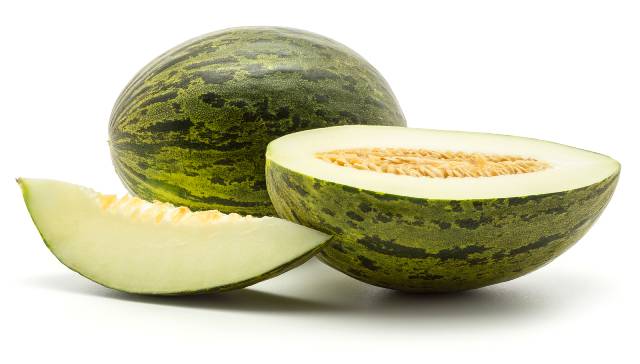
The Santa Claus melon, also known as ‘Christmas melon,’ is a medium-sized melon originating in Spain (17).
Santa Claus melons have a dark-ish green and stripey exterior skin and a yellowy-green to pale white flesh. The melons have a mildly sweet taste.
The melons are called ‘Santa Claus’ because they fully ripen around Christmas time.
Based on NCC Food and Nutrient Database data, here are the full nutritional values per 100 grams of Santa Claus melon (9):
| Name | Amount | % Daily Value (% DV) |
|---|---|---|
| Calories | 36 kcal | |
| Carbohydrates | 9.09 g | 3.3% |
| Fiber | 0.8 g | 2.9% |
| Sugars | 8.12 g | |
| Fat | 0.14 g | 0.2% |
| Saturated | 0.04 g | 0.2% |
| Monounsaturated | <0.01 g | |
| Polyunsaturated | 0.06 g | |
| Omega-3 | 0.03 g | |
| Omega-6 | 0.03 g | |
| Protein | 0.54 g | 1.1% |
| Folate | 19 mcg | 4.8% |
| Vitamin A | 2.50 mcg | 0.3% |
| Vitamin B1 (Thiamin) | 0.04 mg | 3.3% |
| Vitamin B2 (Riboflavin) | 0.01 mg | 0.8% |
| Vitamin B3 (Niacin) | 0.42 mg | 2.6% |
| Vitamin B5 (Pantothenic Acid) | 0.16 mg | 3.2% |
| Vitamin B6 (Pyroxidine) | 0.09 mg | 5.3% |
| Vitamin B12 (Cobalamin) | 0 mcg | 0% |
| Vitamin C | 18.0 mg | 20% |
| Vitamin E | 0.03 mg | 0.2% |
| Vitamin K | 2.9 mcg | 2.4% |
| Calcium | 6.0 mg | 0.5% |
| Copper | 0.02 mg | 2.2% |
| Iron | 0.17 mg | 0.9% |
| Magnesium | 10.0 mg | 2.4% |
| Manganese | 0.03 mg | 1.3% |
| Phosphorus | 11.0 mg | 0.9% |
| Potassium | 228 mg | 4.9% |
| Selenium | 0.7 mcg | 1.3% |
| Sodium | 18 mg | 0.8% |
| Zinc | 0.09 mg | 0.8% |
9) Watermelon
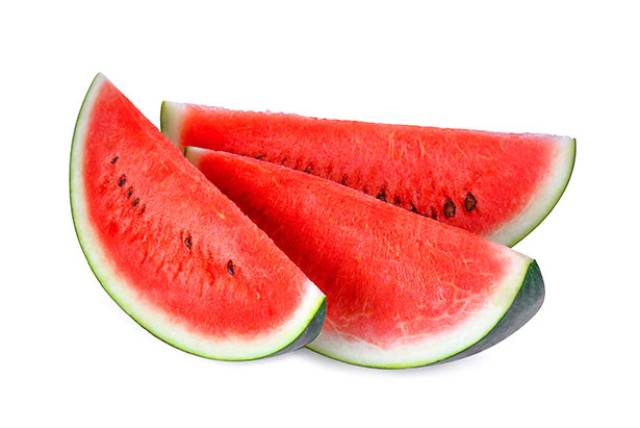
Watermelon is one of the most famous—and popular—melon varieties. Surprisingly, watermelons can come in all different shapes and sizes.
For instance, the heaviest watermelon was grown in the United States in 2013 and weighed 350.5 pounds (159 kg) (18).
While most watermelons have a round, oval shape, it is also possible to find cube-shaped varieties (19).
Watermelons have green and dark green-striped skin and juicy and sweet red flesh.
Interestingly, watermelons have been grown for thousands of years and are native to Africa (20).
The red flesh of watermelon is due to the fruit’s lycopene content, a type of carotenoid with potential health benefits (21).
According to USDA data, 100 grams of watermelon provides the following nutritional values (22):
| Name | Amount | % Daily Value (% DV) |
|---|---|---|
| Calories | 30 kcal | |
| Carbohydrates | 7.55 g | 2.7% |
| Fiber | 0.4 g | 1.4% |
| Sugars | 6.2 g | |
| Fat | 0.15 g | 0.2% |
| Saturated | 0.02 g | 0.1% |
| Monounsaturated | 0.04 g | |
| Polyunsaturated | 0.05 g | |
| Omega-3 | 0 g | |
| Omega-6 | 0.05 g | |
| Protein | 0.61 g | 1.2% |
| Folate | 3 mcg | 0.8% |
| Vitamin A | 28 mcg | 3.1% |
| Vitamin B1 (Thiamin) | 0.03 mg | 2.5% |
| Vitamin B2 (Riboflavin) | 0.02 mg | 1.5% |
| Vitamin B3 (Niacin) | 0.18 mg | 1.1% |
| Vitamin B5 (Pantothenic Acid) | 0.22 mg | 4.4% |
| Vitamin B6 (Pyroxidine) | 0.05 mg | 2.9% |
| Vitamin B12 (Cobalamin) | 0 mcg | 0% |
| Vitamin C | 8.10 mg | 9% |
| Vitamin E | 0.05 mg | 0.3% |
| Vitamin K | 0.10 mcg | 0.1% |
| Calcium | 7 mg | 0.5% |
| Copper | 0.04 mg | 4.4% |
| Iron | 0.24 mg | 1.3% |
| Magnesium | 10 mg | 2.4% |
| Manganese | 0.04 mg | 1.7% |
| Phosphorus | 11 mg | 0.9% |
| Potassium | 112 mg | 2.4% |
| Selenium | 0.40 mcg | 0.7% |
| Sodium | 1 mg | <0.1% |
| Zinc | 0.10 mg | 0.9% |
10) Winter Melon
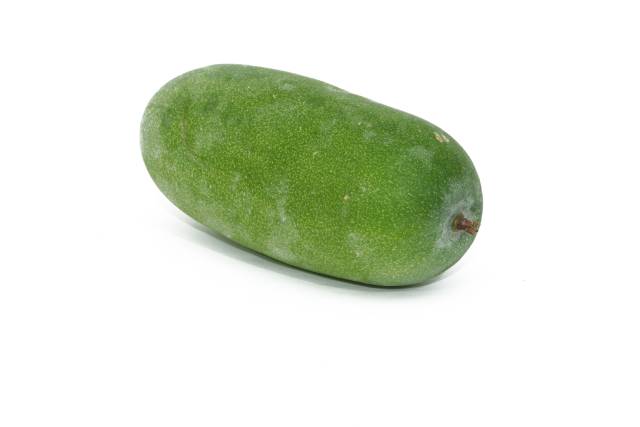
Winter melon is a unique melon that needs cooking before consumption. The melon grows in Asia and often features as an ingredient in cooked dishes such as curries, soups, and stir-fries (23).
Also known as the wax gourd, winter melon has an elongated shape and resembles a zucchini.
Winter melons can range from a length of 15 to 80 cm and have light to dark green skin with white flesh inside.
This melon has a mild taste and a firm texture that softens as it cooks.
In the following table are the full nutritional values for 100 grams of cooked winter melon (24):
| Name | Amount | % Daily Value (% DV) |
|---|---|---|
| Calories | 14 kcal | |
| Carbohydrates | 3.04 g | 1.1% |
| Fiber | 1 g | 3.6% |
| Sugars | 1.18 g | |
| Fat | 0.20 g | 0.3% |
| Saturated | 0.02 g | |
| Monounsaturated | 0.04 g | |
| Polyunsaturated | 0.09 g | |
| Omega-3 | 0 g | |
| Omega-6 | 0 g | |
| Protein | 0.40 g | 0.8% |
| Folate | 4 mcg | 1% |
| Vitamin A | 0.42 mcg | <0.1% |
| Vitamin B1 (Thiamin) | 0.03 mg | 2.5% |
| Vitamin B2 (Riboflavin) | 0.001 mg | 0.3% |
| Vitamin B3 (Niacin) | 0.38 mg | 2.4% |
| Vitamin B5 (Pantothenic Acid) | 0.12 mg | 2.4% |
| Vitamin B6 (Pyroxidine) | 0.03 mg | 1.8% |
| Vitamin B12 (Cobalamin) | 0 mcg | 0% |
| Vitamin C | 10.5 mg | 11.7% |
| Vitamin E | 0.08 mg | 0.5% |
| Vitamin K | 2.8 mcg | 2.3% |
| Calcium | 18 mg | 1.4% |
| Copper | 0.02 mg | 2.2% |
| Iron | 0.38 mg | 2.1% |
| Magnesium | 10 mg | 2.4% |
| Manganese | 0.06 mg | 2.6% |
| Phosphorus | 17.0 mg | 1.4% |
| Potassium | 5.0 mg | 0.1% |
| Selenium | 0.2 mcg | 0.4% |
| Sodium | 107 mg | 4.7% |
| Zinc | 0.59 mg | 5.4% |
All Types of Melon Offer Good Nutritional Value
This article shows that different melon varieties are low in calories and all offer a broad range of vitamins and minerals.
Although most of these vitamins and minerals are not in high amounts, melons offer a good amount of nutrients per calorie.
Vitamin C is the most significant of these nutrients, and depending on the specific melon, it is present at around 10-40% of the recommended daily value per 100 grams.
Aside from their nutritional characteristics, melons are juicy and refreshing fruits with an enjoyable taste.

